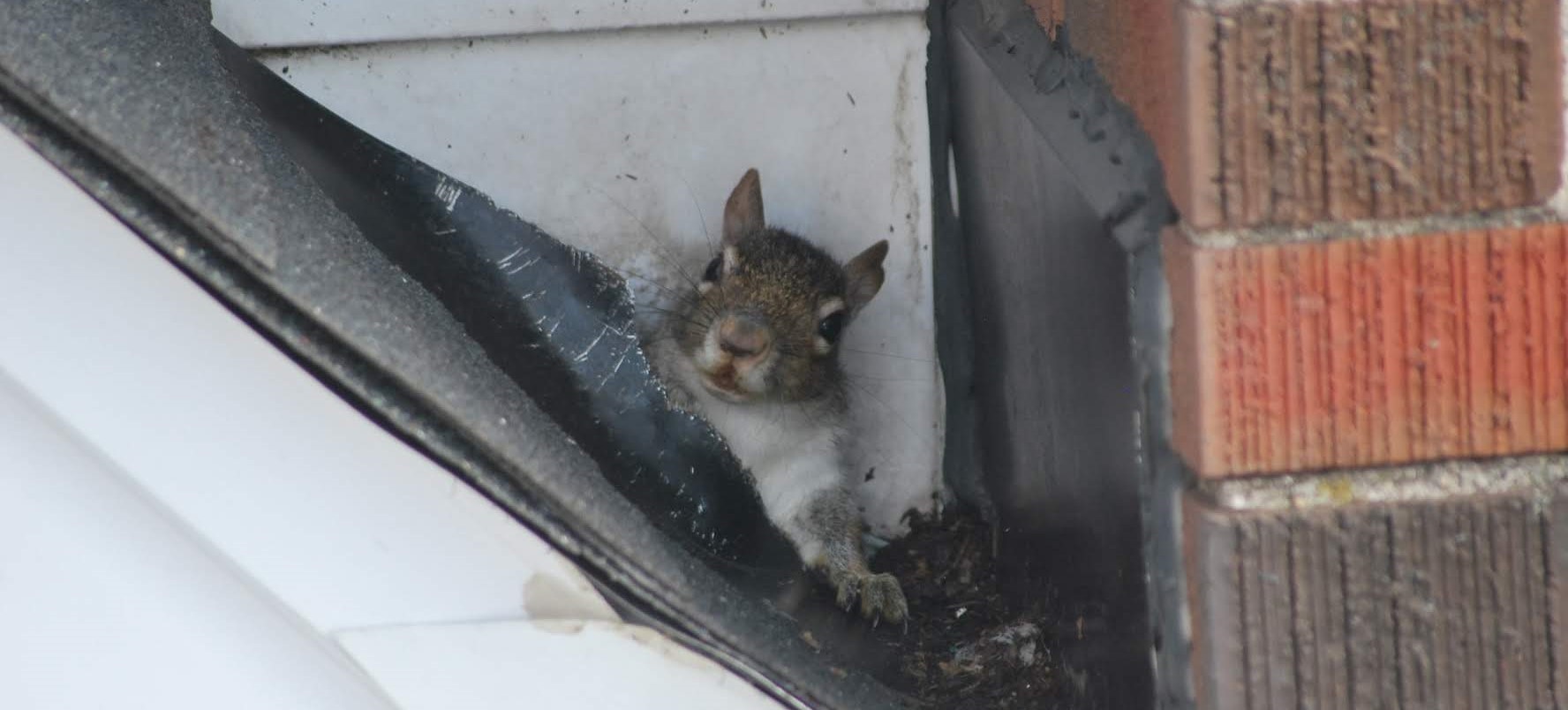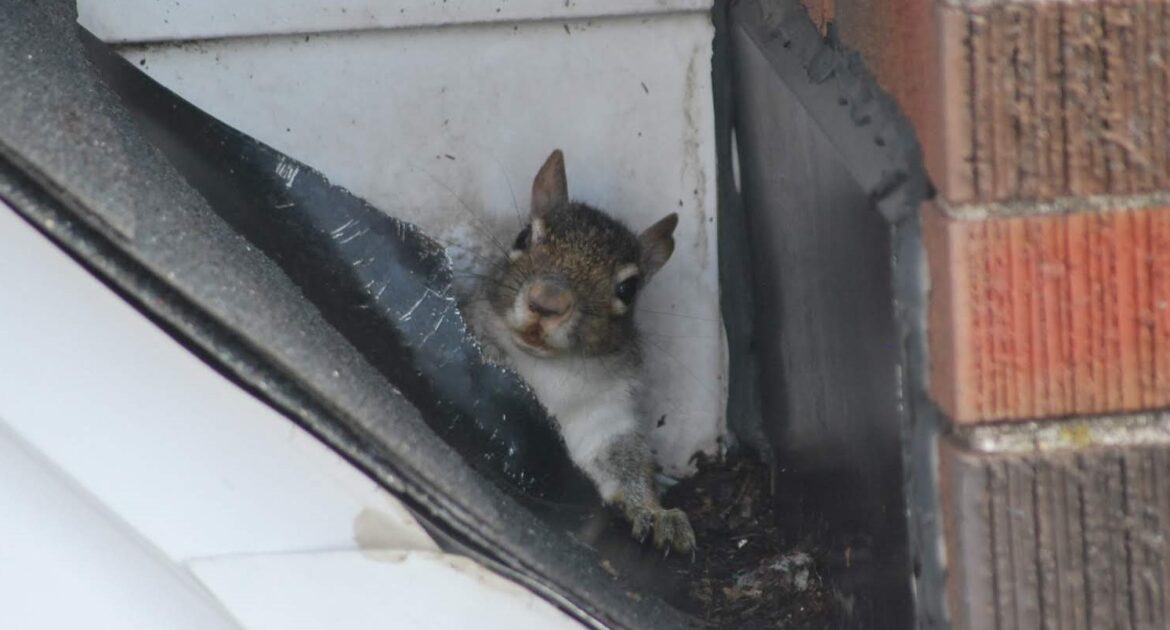You’ve probably seen them dart up a tree trunk or leap from branch to branch without missing a beat. Squirrels are true masters of the trees, moving with incredible speed and control. But have you ever stopped to wonder—how do squirrels climb trees so well?
The answer lies in their amazing physical traits, problem-solving skills, and years of evolution as tree-dwelling wildlife. From their sharp claws to their flexible ankles, every part of their body helps them grip, balance, and move with precision. These squirrel climbing abilities not only keep them safe in the wild, but they also make them skilled invaders of attics and homes in places like Gahanna.
At Skedaddle Humane Wildlife Control in Gahanna, we often see how these climbing skills bring squirrels close to families. Understanding how squirrels climb trees helps explain their behaviour and why prevention is so important. Let’s look at the 10 features that make them such climbing experts, followed by how you can keep them out of your home.
1. Sharp Claws for Grip
Squirrels have long, curved claws that dig into bark like hooks. This gives them a secure grip, even on smooth or vertical surfaces. Unlike many animals, their claws don’t wear down quickly, meaning they’re always sharp and ready to climb.
Without this tool, they’d slip down the trunk instead of racing up with ease. Their claws also help them cling to surfaces while resting or preparing to jump. These claws are also useful for defending themselves if threatened, adding another layer of survival.
2. Flexible Ankles That Rotate
One of the biggest secrets of how squirrels climb trees is their unique ankles. Unlike most animals, a squirrel’s ankle joints can rotate almost 180 degrees. This allows them to climb headfirst down a tree—something very few animals can do.
This ability helps them escape predators, descend quickly, and adjust direction mid-climb. It’s a big reason they look so confident when moving around at high speeds. Their rotating ankles also allow them to explore rooftops, fences, and other human structures with the same ease as trees.
3. Powerful Back Legs
Strong back legs act like springs, pushing squirrels upward with each leap. These legs give them the strength to jump long distances, sometimes ten times their own body length.
The legs also give them balance when moving from tree to tree. Combined with their claws and ankles, the back legs make every climb faster and smoother. Their legs are so powerful that even if they fall, they can land safely and quickly bounce back into action.
4. A Tail That Works Like a Rudder
The bushy tail isn’t just for looks—it plays a huge role in balance. As squirrels climb, leap, or race along narrow branches, the tail helps them steer and adjust their weight.
It also acts as a parachute when they jump, slowing their fall and protecting them from injury. Without the tail, squirrels would struggle to move as confidently among the trees. The tail also doubles as a blanket during cold weather, keeping them warm in nests.
5. Lightweight Bodies
Squirrels aren’t heavy, which makes climbing easier. Their lightweight frames put less pressure on branches, allowing them to move quickly without snapping twigs beneath them.
This is especially helpful when they’re gathering food or avoiding predators. The less weight they carry, the faster and more precisely they can climb. Their small size also helps them fit into tight spots, like roof gaps or attic vents.
6. Sharp Eyesight
Vision is key for squirrel climbing abilities. Their large eyes give them a wide field of view, helping them judge distances and spot safe landing zones.
Good eyesight also helps them detect threats while they’re up high. It’s one more reason they can move so quickly while still staying aware of their surroundings. Their eyes also adjust well to dim light, making them confident climbers even in the early morning or evening.
7. Quick Reflexes
Squirrels are known for sudden bursts of speed and fast reactions. If a branch wobbles or they misstep, they can correct themselves in a split second.
These quick reflexes are what keep them safe during daring leaps. They rarely fall, and when they do, they often recover mid-air. This quick response is also why they can dodge predators or cars with such agility.
8. Strong Sense of Touch
Tiny hairs on their paws increase sensitivity to surfaces. This allows them to feel texture changes on bark or branches.
That extra sense of touch helps them know where to grip or place their feet. It also lets them adjust instantly if the surface shifts. This sensitivity is especially helpful when moving across unfamiliar objects, like shingles, power lines, or fences.
9. Problem-Solving Skills
Squirrels are natural problem solvers. They learn from experience and can figure out how to reach food or escape danger.
This brainpower comes into play when navigating tricky tree paths. It also explains how they find their way into attics and roofs—climbing ability plus smarts makes them tough to stop. Studies show squirrels can remember food hiding spots for months, proving just how strong their memory is.
10. Teamwork Between Body and Brain
The real magic is how all these skills work together. Claws, ankles, legs, eyes, and brainpower combine to make every climb seamless.
It’s this teamwork that allows them to move with such precision and speed. Without one piece, they wouldn’t be the true masters of the trees we see today. This perfect combination makes them one of the most adaptable tree-dwelling animals in places like Gahanna.
Common Tree-Dwelling Wildlife Challenges for Homeowners
When you see squirrels climbing trees in your yard, it can be entertaining. But those same skills often lead them onto roofs, into attics, and through vents. Here are the main problems families in Gahanna deal with:
- Noise: Scratching, scurrying, and thumping sounds above ceilings.
- Damage: Chewed wires, shredded insulation, and damaged vents.
- Health Risks: Droppings and nesting materials can spread disease.
- Ongoing Access: Once they find a way in, they’ll keep coming back.
These challenges are why prevention matters just as much as understanding how squirrels climb trees.
3 Surprising Facts About How Squirrels Climb Trees
You already know squirrels are quick and agile, but some of their abilities are truly surprising. Here are a few quick facts that show just how impressive their climbing skills really are:
- Their ankles can rotate almost 180 degrees, which lets them run headfirst down trees.
- A squirrel can jump up to ten times its body length in a single leap.
- Their tails work like parachutes, helping them land safely if they fall.
How to Prevent Squirrels with Skedaddle
You can admire squirrel climbing abilities from a distance, but you don’t want them moving into your attic. At Skedaddle Humane Wildlife Control in Gahanna, we provide long-term solutions to keep your home safe. Our prevention steps include:
- Inspecting your home for weak spots where tree-dwelling wildlife might enter.
- Using one-way doors that let animals leave but stop them from coming back in.
- Sealing and securing areas that squirrels commonly target.
- Offering advice on trimming tree branches that lead to rooftops.
Our approach is humane, effective, and built to last.
Why Squirrels Climb with Precision and Speed
Squirrels are more than just backyard visitors—they’re skilled athletes of the animal world. By combining sharp claws, flexible ankles, strong legs, and quick reflexes, they show us how tree-dwelling wildlife adapts perfectly to its environment.
But those same squirrel climbing abilities can bring them into conflict with people, especially in neighbourhoods like Gahanna where trees and homes sit close together. That’s why prevention and professional support are so important.
Keep Your Home Safe from Masters of the Trees
How squirrels climb trees tells us a lot about their behaviour and why they thrive in places like Gahanna. Their balance, speed, and problem-solving abilities make them incredible tree-dwellers, but those same skills can also bring them into attics and roofs.
At Skedaddle Humane Wildlife Control in Gahanna, we use humane methods to keep wildlife out of your home while keeping the animals safe. Request an estimate today to protect your home from tree-dwelling wildlife and learn more about squirrel climbing abilities and the challenges they can create.




